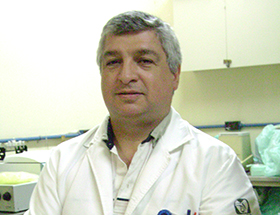
Knowledge of Entamoeba histolytica biology in the last 17 years has been acquired largely as a consequence of this parasite's axenic cultivation in TPS-1 or TYI-S-33 media. Unfortunately, there are often low yields in these media, due to variability of their main components, Panmede and yeast extract. We describe a medium, PEHPS, of which the main components are extracts of ox liver, and ox and swine pancreas (EHP). 5 strains of E. histolytica and 2 of E. invadens were quickly and easily adapted to PEHPS and serially cultivated for 3 years. Yields progressively rose initially, and then became stable. Depending on the strain, average yields in the last 6 months of this study were 1.3 to 3.1 x 10(5) amoebae/ml for E. histolytica and 5.5 to 5.7 x 10(5) for E. invadens. All the 18 EHP batches tested supported vigorous amoebal growth. PEHPS had 2 additional advantages: (a) it was stable at 4 degrees C or 25 degrees C for 9 months, and at -10 degrees C for at least 2 years, and (b) it supported amoebal growth with inocula as low as one trophozoite/ml. PEHPS avoids the variability shown by TPS-1 and TYI-S-33, and could therefore be a good alternative for axenic amoebal cultivation.








